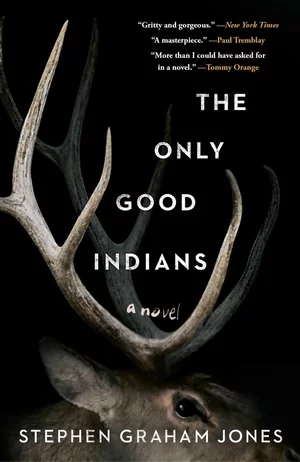
Be Afraid, Very Afraid . . .
I didn’t think I liked horror fiction. In my teens, I didn’t want to watch Jason or Freddy Krueger slash their way through their teenage victims. I didn’t read Stephen King. That stuff freaked me out.
But, you say, that’s what horror is supposed to do, freak you out, give you a good scare. That’s the thing, back then, just hearing about Jason and his friends freaked me out. I was scared enough without seeing it on the screen or reading it on the page.
Some of that had to do with a religious upbringing and probably the Satanic Panic (brought about by my parent’s fears of Dungeons & Dragons) of the ’80s. Some of it had to do with a general dislike of jump scares in movies or even real life.
Even though I shed my religious upbringing, reading horror fiction wasn’t high on my list (horror movies still don’t rank high–that jump scare thing still gets me)–until now.
. . . Or Enjoy Great Characters and Great Writing
Now, I think I’ll spend more time reading horror fiction, especially after reading Stephen Graham Jones’ The Only Good Indians and Bentley Little’s The Consultant.
I read Jones’ book after reading a couple of interviews with him about writing. I read Little’s novel after watching the Prime series starring Christoph Waltz as the delightfully sinister Regus Patoff.
In both the series and the novel, a software company in dire straits hires (in the series, the CEO kills himself; in the novel, the company loses a lucrative merger) Patoff as a consultant to do what consultants do in real life–“consolidate staff, streamline practices and procedure, [and do everything needed] in order to stay viable in today’s competitive marketplace.”
The novel is, as Little notes in his dedication, about the “horrors of the modern workplace.” It’s also about ordinary people like protagonist Craig Horne getting caught up in something extraordinary and seemingly beyond their control.
It’s the characters that are also the most engaging part of Jones’ novel. In it, four Native Americans, Lewis, Ricky, Gabe, and Cassidy come to regret an elk hunt on land reserved for tribal elders from a decade before the action of the novel takes place. During the hunt, the four men in a frenzy kill a large number of elk, including a mother with a live calf. They think the hunt is a bounty, one that could keep them fed all winter. But, they have to discard the meat when the law catches up to them.
Lewis, in particular, is well drawn. A decade after the hunt, he’s settled down, gotten married, and works at the local post office. He’s also the first of the group to discover he’s being stalked by a supernatural being, an elk woman that seems to represent both the mother elk and her calf.
Jones masterfully builds sympathy for the characters, focusing on their ordinary lives before tearing those lives apart. He also ends the story with a twist that seems unusual–I won’t spoil it here, because the novel, along with Little’s, is well worth the read.
